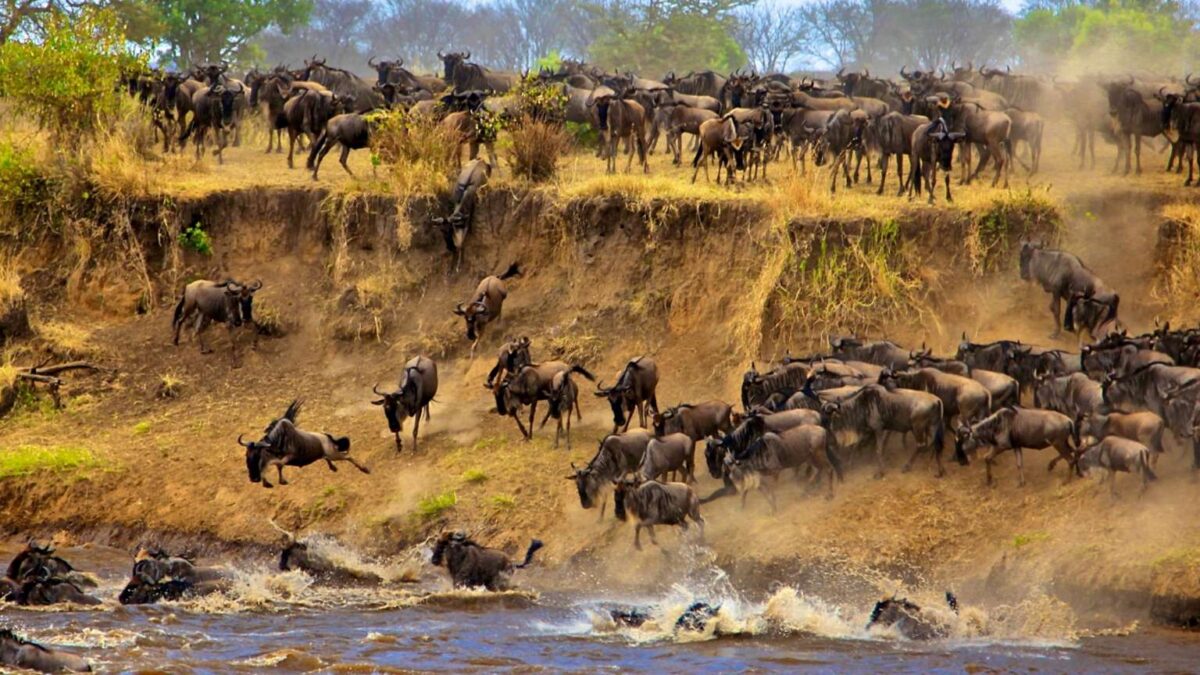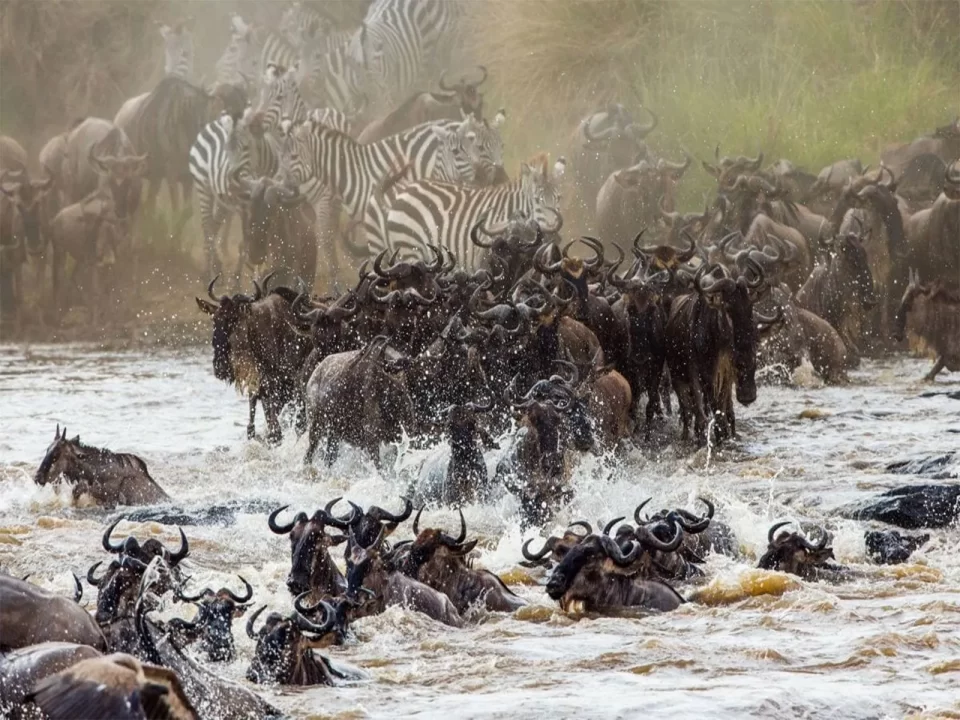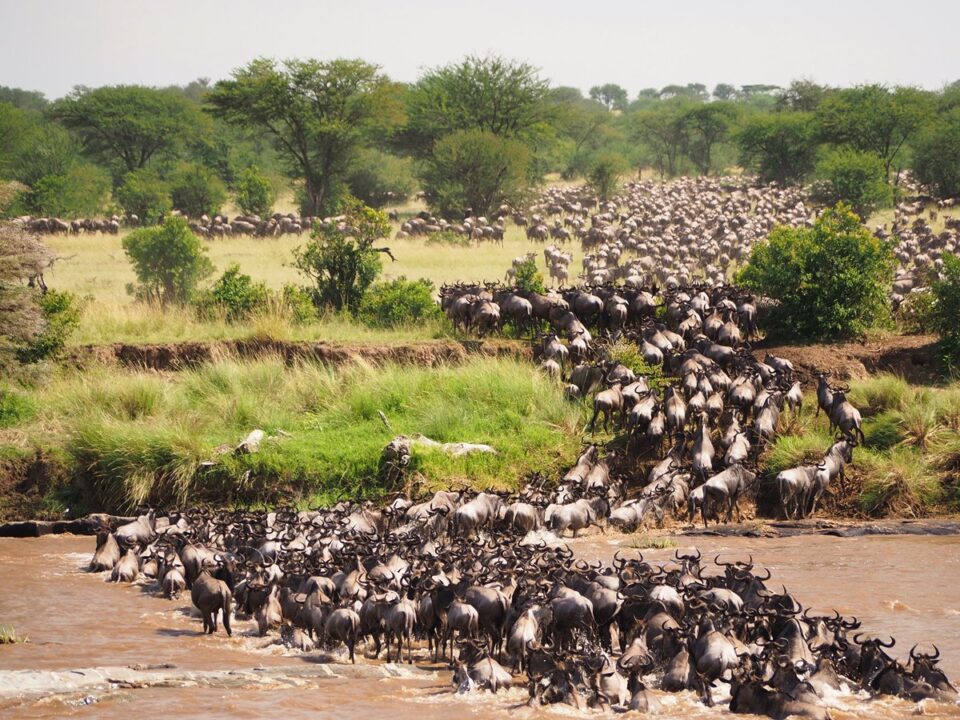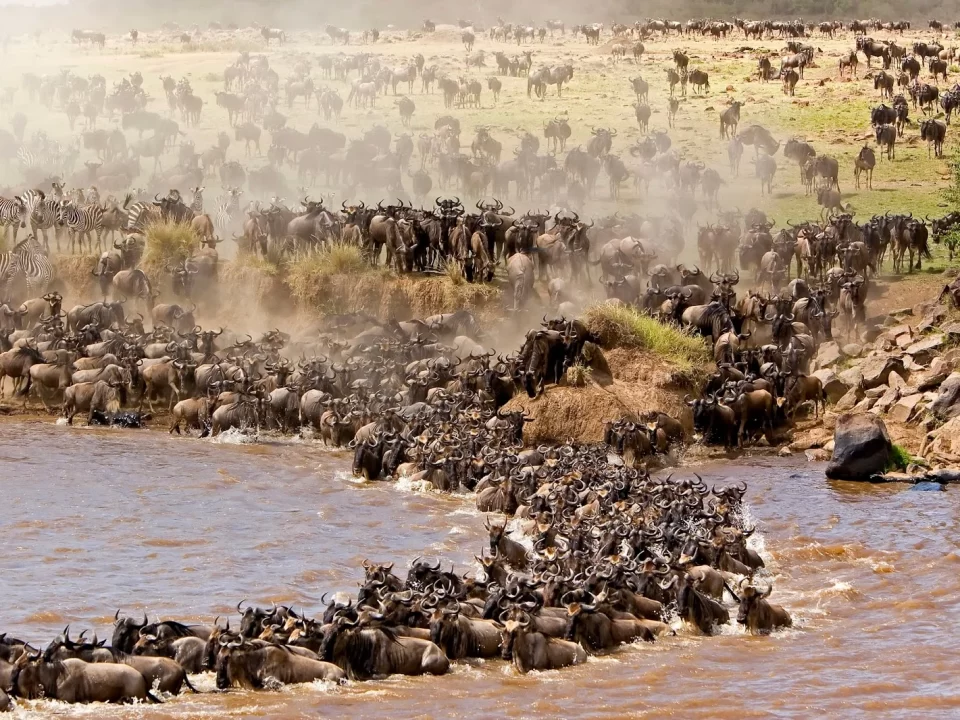The Annual Wildebeest Migration Safari

Camping Safaris to see Wildebeest Migration in Africa
March 7, 2024
Great Wildebeest Migration Safari Guide
March 7, 2024The Epic Annual Wildebeest Migration Safari: Unveiling the Marvels of 2024-2025 in Tanzania and Kenya
Embark on an exhilarating journey as we delve into the extraordinary spectacle known as the Annual Wildebeest Migration Safari, unfolding its wonders across Tanzania and Kenya in 2024-2025. Often hailed as the “Greatest Show on Earth” and deemed one of the Seven New Wonders of the World, this migration is a dynamic cycle of wild movement that defies a simple start or end, creating an ever-changing narrative through the year. Commonly associated with the Serengeti, this awe-inspiring migration can also be witnessed in the Masai Mara National Reserve in Kenya.
Best Times to Witness the Wildebeest Migration
For those eager to witness the Wildebeest Migration, strategic timing is crucial. The best windows to behold this natural marvel are between December and March or from May to November. However, the migration operates on a schedule dictated by the unpredictable rains, rendering each year unique and offering an ever-changing panorama of the animal kingdom.
This grand migration involves approximately 1.5 million wildebeests, gazelles, and zebras, embarking on a great clockwise sweep across the expansive Serengeti ecosystem. Unlike resident game, which tends to stay within territorial areas, the migrating herds follow varying routes, creating a spectacular display that stretches as far as the eye can see.
Understanding the Complex Wildebeest Migration Cycle
The intricacies of the Wildebeest Migration are shaped by seasonal rains, grazing availability, and a few physical barriers. Commencing the annual cycle, the short rains in November and December nourish the fertile volcanic soils, drawing the herds south from Kenya’s Masai Mara to the sweet short-grass plains in Tanzania’s Serengeti. Settling in the southern plains from January to April, the wildebeests revel in ample food supply.
As the long rains ensue in late March or April and extend into May, depleting the southern plains, the migration shifts northwesterly. This movement prompts river crossings at the Grumeti and Mara Rivers as the herds journey back towards the Mara. August, September, and October mark the Mara’s peak season when fresh grazing and water become readily available.
With the onset of fresh rains around October, the migration anticipates the change in season, prompting a restless movement north and south. This period yields captivating river crossing action, heralding the start of the migration cycle anew as the short rains rejuvenate the southern Serengeti plains.
Navigating the Challenges and Highlights of the Migration
Calibrating your safari experience to witness specific highlights like river crossings, birthing periods, or predator interactions requires understanding the seasonal nuances. During the short rains from November to April, the southern Serengeti plains become a hub for wildebeest birthing, offering a captivating display of predator-prey interactions.
Post the long rains from May to October, the herds gradually move north and west, seeking greener pastures and dependable water sources. The timing of this migration route can vary based on weather conditions. The Mara River crossing, a dramatic and chaotic spectacle, unfolds during the dry season, presenting a challenge for spectators to anticipate but a breathtaking sight when witnessed.
Choosing Between Kenya and Tanzania for the Ultimate Migration Experience
Deciding between Kenya and Tanzania depends on the time of year you plan your safari. The migration is active in Tanzania’s Serengeti National Park for nine months, while Kenya’s Masai Mara National Reserve takes center stage during August, September, and October. For logistical ease, it’s advisable to focus on either Kenya or Tanzania, avoiding last-minute switches for a seamless safari experience.
Key to a Successful Wildebeest Migration Safari
In the realm of safari adventures, it’s the people who make the real difference. Professional guides dedicated to enhancing your experience, coupled with their expertise and commitment to capturing the perfect moment, elevate your safari beyond creature comforts. While the importance of comfortable accommodations is acknowledged, the true essence lies in the skillful and passionate guides and hosts who bring the safari experience to life. The success of a migration safari hinges on the proficiency and dedication of these key individuals, making the journey memorable and immersive.




